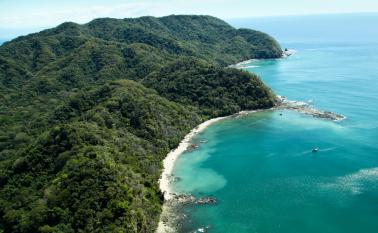
Sometimes we may think of wildlife conservation organizations as heroic groups who go to the less developed parts of the world to save their wildlife. That does happen, but sometimes it’s the smaller, less wealthy nations that show the big ones how it’s done. Costa Rica has been gaining a name for itself with its commitment to wildlife conservation and environ mental protection.
Costa Rica is a tiny country but it has around 25% of the world’s biodiversity – 4% of the species on earth. Its intelligent approach to the land and its natural riches means that it’s been ranked as the greenest (aka eco-friendly) country in the world. In 2012 it made headlines around the world after banning hunting for sport – the first Latin American country to take this step. Just as remarkable was that the initiative was first floated by popular demand, before being approved by government.
Costa Ricans take their beautiful country and wildlife conservation very seriously. More than a quarter of the country’s land consists of protected areas and wildlife reserves and parks, making them world leaders in protecting the environment. The Costa Rican government has a glowing reputation for its measures to ensure the survival of wild creatures, plants and their habitats.
Until the 1990s Costa Rica had one of the fastest rates of deforestation due to the timber industry in the world. In fifteen years they turned that around, though the growing population has raised the demand for local food production. Now farmers are given financial incentives to become tree farmers rather than cattle ranchers who clear the land for grazing for stock. Illegal trading in animals and birds such as macaws for pets has been subject to a rigorous clampdown. There are strong measures in place to stop industries polluting water sources. The country already produces a striking 90% of its electricity from renewable sources and is aiming to be carbon neutral by 2021.
Logging and forest clearances that destroyed habitats had left many local species in a perilous state. The country has 250 species of mammal, almost 900 species of bird, 400 species of reptiles and amphibians and a staggering three hundred thousand insect species. Its flora contains a wealth of plants, including rare and unique orchids. The endangered Central American squirrel monkey, found only in Costa Rica and Panama, is now off the endangered species list, though still listed as ‘vulnerable’.
The Costa Rican policies have paid off, not only for wildlife conservation, but because its natural wonders have made it a prime ecotourism destination. It is, however, not a wealthy country, but their foresight and enlightened approach is evidence that good practice is an option for all countries, rich or not.

